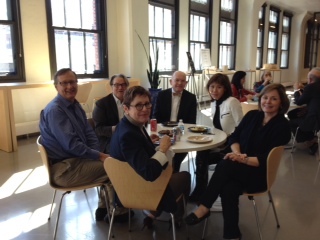The sea level is rising. That’s an indisputable fact, along with the increasingly dramatic storm forces that are part of climate change. The next century will certainly bring more significant erosion to coastal areas, particularly in New England.
Scientists have a wealth of information about the ocean and the tides, primarily because sailors and fishermen have kept weather logs and sailing records for more than two hundred years. We know for a fact that the average sea level has risen a little over 8 inches since 1880. That doesn’t sound like a lot, perhaps, but it contributes greatly to beach erosion during calm weather, and damaging higher tidal surges during storms.
It’s the emission of large amounts of greenhouse gases that’s driving the change. The difficulty for coastal towns on the East Coast is that even while sea levels are rising, the land mass is actually sinking. All the way from southern Maine to northern Florida, and fastest in the Chesapeake Bay region, coastal flooding is getting worse, in part because of the lower land levels.
The New York Times published an excellent article, The Flood Next Time, identifying average sea level increases along the East Coast. In Norfolk, Virginia, as an example, neighborhoods are flooding even without storm surges. You can read the Times article here.
When I attended Greenbuild in Philadelphia in November 2013, architect and environmental expert Ed Mazria said that 2013 was the hottest year on record. His organization, 2030 Architecture, was established in 2002 in response to climate change, with a mission of changing the way the built environment and communities are planned, designed and constructed. Environmentalists first thought they could turn things around by 2030, but now they know that climate change is accelerating at a faster pace than thought. Read his thought-provoking Special Bulletin here.
Top climate scientist James Hansen, retired from the NASA Goddard Institute for Space Studies in New York City (1981-2013) and a spokesperson for the dangers of climate change, continues to warn us about the dangers of ignoring what’s taking place. You can watch his informative and persuasive TED talk here. He tells us we’ve passed the tipping pout of CO2 levels able 400ppm, but we must carry on and do the best we can.
The question is: what is our best? Attempts to mitigate the beach erosion and save homes on Nantucket aren’t always successful, or popular. In an article written for Treehugger.com, Sarah Oktay, the vice-chairman of the Nantucket Conservation Commission, explains the problem with “beach nourishment,” which is the dumping of tons of sand on eroded beaches to slow their disappearance, as well as putting up retaining walls.
The attempts to slow erosion, she says, cause harm to someone else. “If you take beach bluffs or dunes and you cover them in rocks so it can’t go anywhere, then it no longer provides that feeder material to downdrift beaches, so you’ll lose the beach in front of those rocks, and you’ll lose the beach downdrifts. It’s basically telling your neighbors, ‘Well, I want my home more than you want your beach.’ That doesn’t mean it’s not sad.”
This photograph of the beach in Madaket on Nantucket Island shows the way the rising tides come in, and when they recede, drag sand back out to sea. There used to be a home on the site shown below.
A clear view of beach erosion. Baxter Road on Sconset Bluff has been hardest hit.
There are a number of homes that have been moved to higher ground, or farther inland, including some that have been island landmarks for generations.
The home below is jacked up on steel beams.
Here’s another home getting ready to be moved farther inland.
We’re facing the limits of human intervention in combating a situation we created. We’ve lost time arguing over whether or not global warming and climate change are real concerns. Rather than feeling helpless, however, we need to take what action we can to support a healthy earth, and protect our coasts. There are so many good people doing good work for the environment. I urge you to support the environmental groups of your choice. I believe in The Power of One. You and I together can make a difference for the generations yet to be born.










